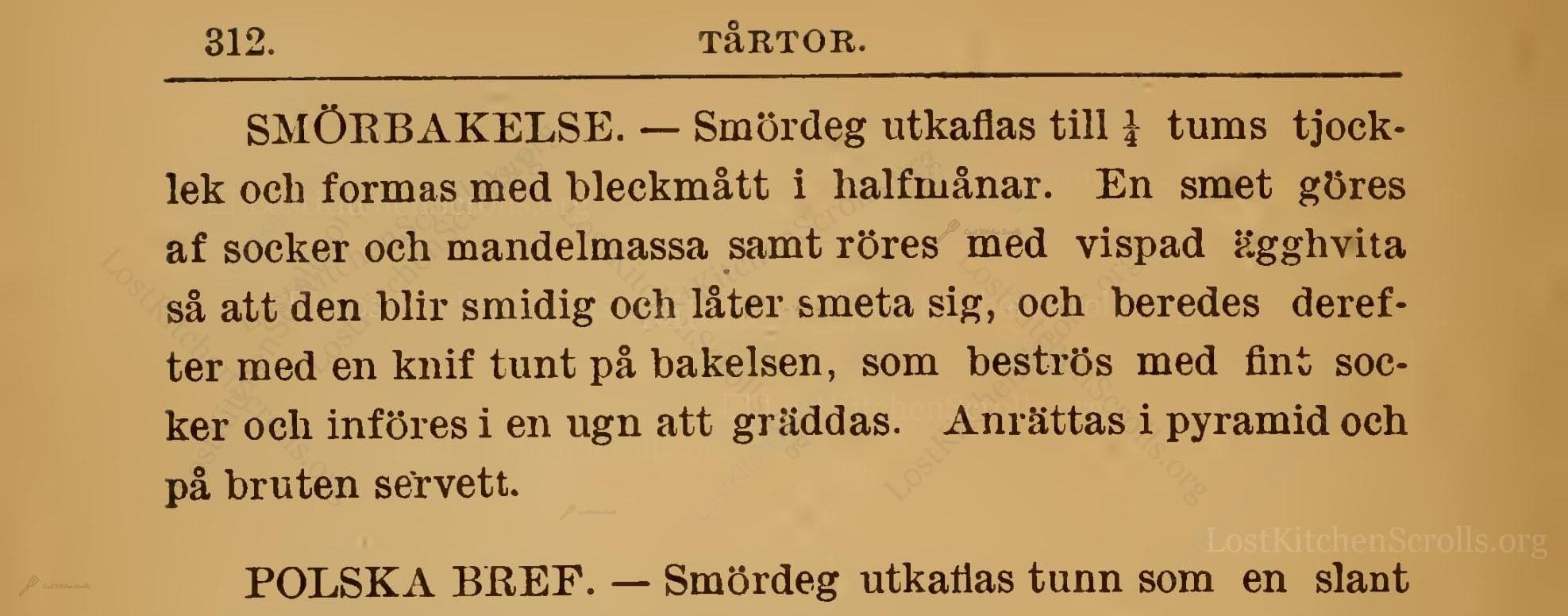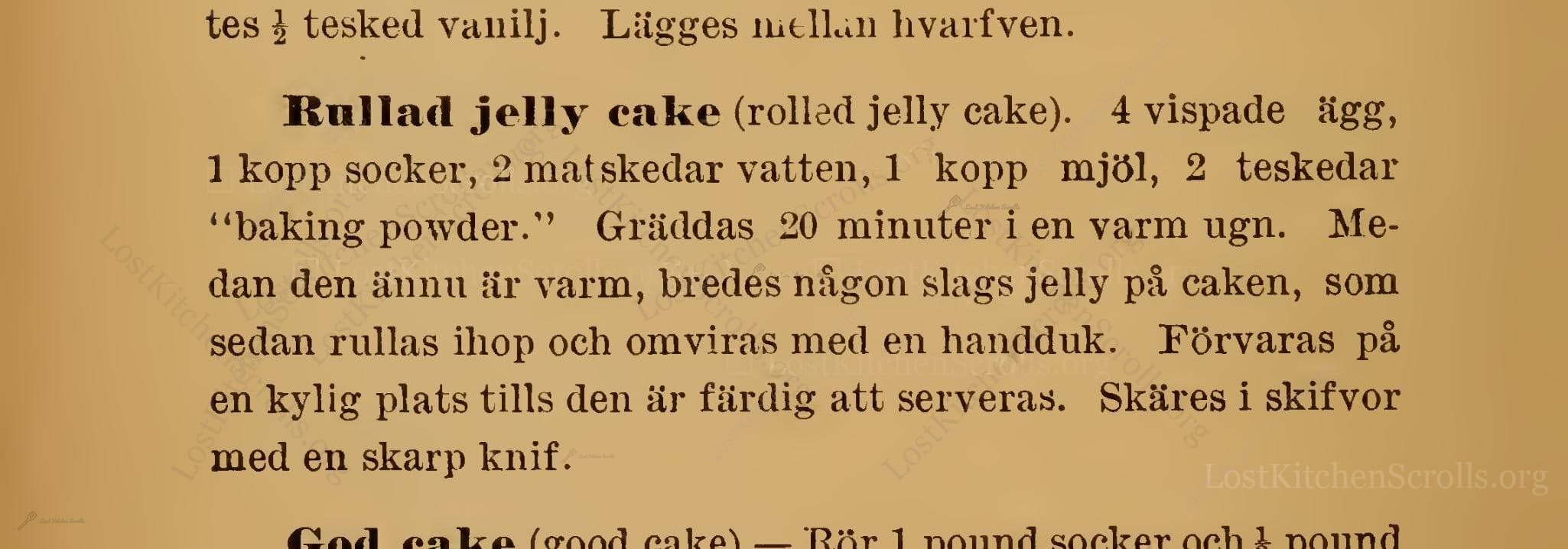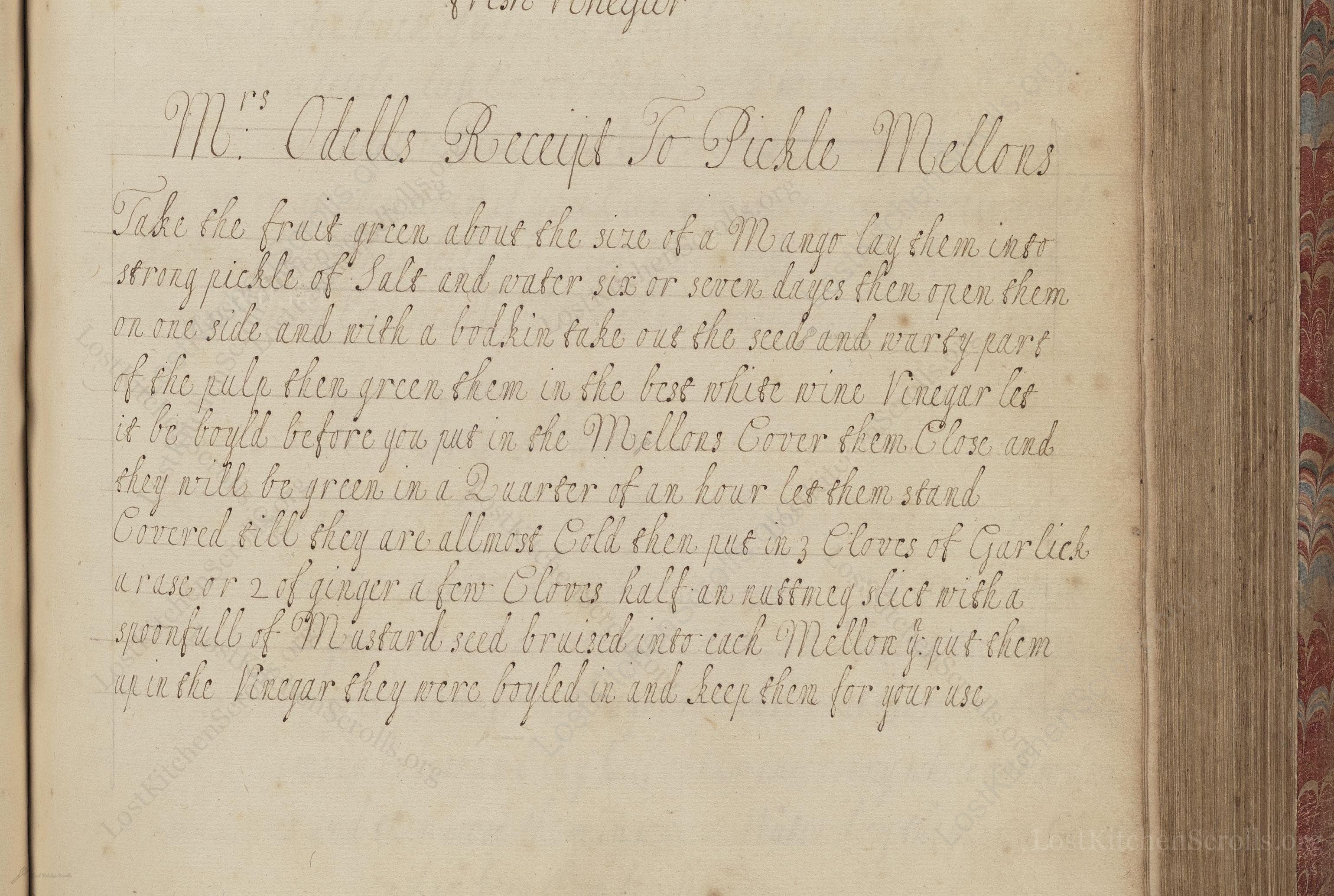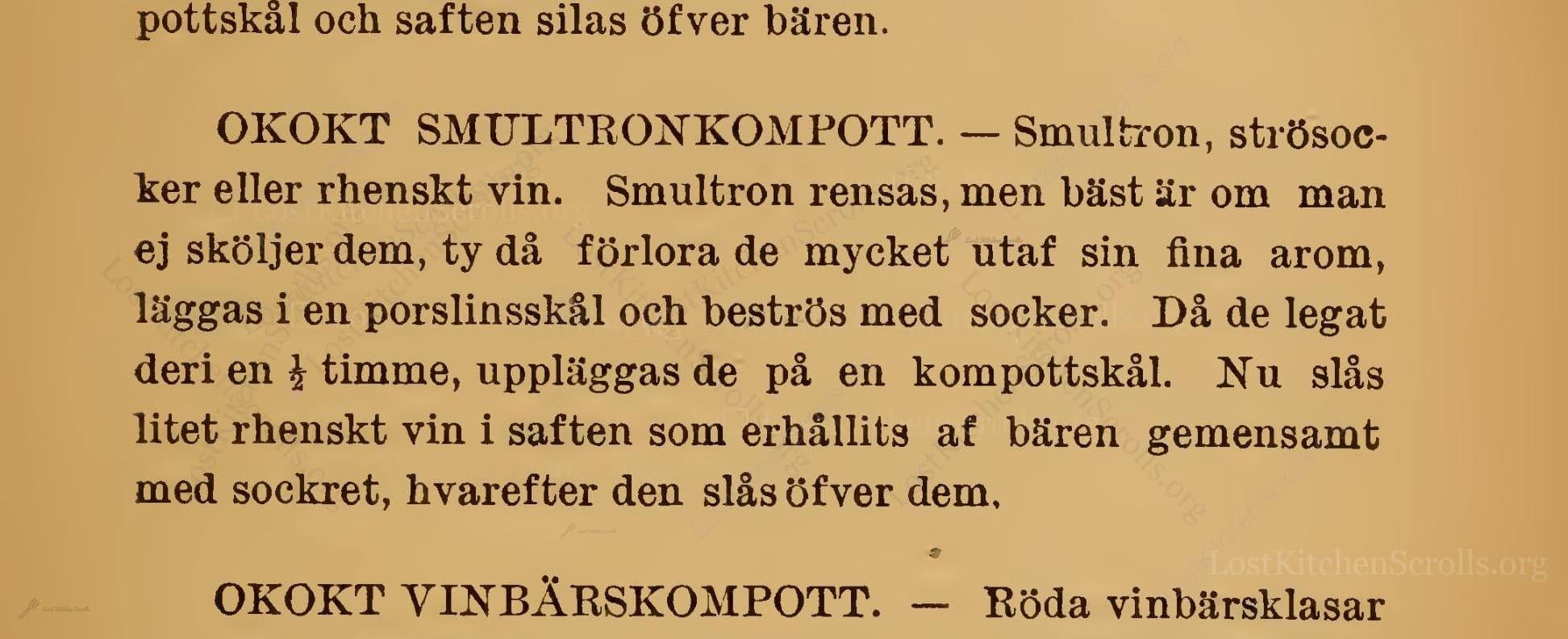Lost Kitchen Scrolls
"The discovery of a new dish does more for the happiness of the human race than the discovery of a star."— Jean Anthelme Brillat-Savarin (1755-1826)
Journey through centuries of historical recipes, carefully transcribed from historical manuscripts and cherished family traditions. With modern kitchen adaptations.










Featured Culinary Treasures
Handpicked exceptional recipes that showcase the finest of culinary history
Latest Culinary Scrolls
Discover the most recent historical recipes from our collection

This recipe hails from an early 18th-century Dutch cookbook, a testament to the luxurious sweet pastries enjoyed in upper-middle-class homes of the Netherlands. The instruction reflects the high value placed on refined sugar and aromatic waters in Dutch patisserie, a result of the nation's world-spanning trade links. Such doughs were used for lining tartlets, as ‘onderkorsten’, and likely for sweet confections far from today’s mass-produced bakery fare. Published in 1725 in Leyden, this recipe captures both the flavors and the genteel aspirations of its age, where even the humblest crust might be perfumed with the essence of distant orange blossoms and bright, fresh lemons.

Het Hollands, of Neederlands kook-boek

This recipe originates from Mistress Anna Campbell’s pastry book, written in 1707—a time when preservation was paramount and flavor was bold. Recipes like this showcase the resourceful, seasonal use of game meats, and the culinary tradition of 'potting,' which helped keep meat fresh before the days of refrigeration. Potted hare would grace the sideboards of well-to-do Scottish and English households, ready to be spread on fresh bread as a savory treat or taken on journeys, where its keeping quality and robust seasoning made it a cherished provision.

Mistress Anna Campbell her pastry book

This charming recipe comes from "Praktisk, illustrerad kok-bok för Svenskarne i Amerika," published in Minneapolis in 1889 for Swedish immigrants adjusting to life in the United States. The cookbook was designed to blend Swedish traditions with new-world ingredients and kitchen practices, allowing families to recreate a taste of home in an unfamiliar land. The recipe reflects a period when fancy pastries like smörbakelse (literally 'butter pastry') signaled festive occasions and gatherings, rooted in European baking traditions but made accessible within the vibrant Swedish-American communities of the Midwest.

Praktisk, illustrerad kok-bok för Svenskarne i Amerika
"Green Apricots Conserved"

This recipe comes from the Dutch cookbook "Het Hollands, of Neederlands kook-boek," published in Leyden in 1725. At that time, Europe was enthralled with sugarwork and preserving exotic fruits brought in via trade. Wealthy Dutch kitchens prized novelties like green (unripe) apricots, which could be candied or preserved as a show of both culinary skill and international reach. Recipes like this one display both mastery over sugar techniques and a fascination with transforming otherwise inedible fruits into sweet delicacies. This was an era when sugar was a luxury, used not only for flavor but as a status symbol and means of food preservation. The methodical steps of blanching, cooling, and simmering reflect both a careful attention to texture and an understanding of how to maintain the vibrant color of the apricots—a small marvel in the days before refrigeration or modern food chemistry.

Het Hollands, of Neederlands kook-boek

This recipe, penned in 1916 by Hortensia Volante in her handwritten collection 'Recetas de Pardo', captures the blend of traditional Spanish baking and early 20th-century French culinary influence popular among upper-middle-class households. The use of 'nata' (clotted or heavy cream) and 'Royal' baking powder hints at the increasing availability of processed ingredients and kitchen conveniences at the time. These simple, comforting 'bizcochos' would likely have accompanied afternoon tea or coffee, forming part of domestic rituals in a pre-war Spanish home. Manuscript cookbooks like this one served as treasured family archives, handed down through generations, each reflecting the prevailing tastes and social trends of their era.

Recetas de Pardo
"Rolled Jelly Cake"

This delightful Rullad jelly cake recipe first appeared in 1889 within Charles A. Vallentin's "Praktisk, illustrerad kok-bok för Svenskarne i Amerika." The book was a practical guide for Swedish immigrants making a new life in America while yearning for flavors from home. The cake is a riff on the European jelly roll, merging Swedish sensibilities with New World ingredients, and reflects the adaptability and resourcefulness of the immigrant kitchen. It was an accessible treat—simple yet celebratory—ideal for gatherings, fika, or a special afternoon snack.

Praktisk, illustrerad kok-bok för Svenskarne i Amerika

This recipe, attributed to Ann Goodenough and dating from the early to mid-18th century (c. 1700-1775), hails from the golden age of English 'biskett' baking—recipes for almond biscuits or small cakes were treasured features of the period’s fashionable tea tables. Such confections balanced opulence—almonds and rose water were luxury goods—with the finesse of delicate whisked eggs. Recipes were preserved by women for domestic use; this one likely passed through the hands of several generations. The manuscript comes from a time before mass-produced baking powder and standardized measurements, when precision stemmed from skill, observation, and endless patience at the whisking bowl.

Cookery book of Ann Goodenough

This recipe comes from "La Cocina en el Bolsillo No. 8," published in 1890 by Antonio Vanegas Arroyo, part of a popular leaflet series in late 19th-century Mexico City. At a time when portable recipes were all the rage, these pocket-sized booklets reflected the flavors and ingenuity of Mexican home kitchens, adapting traditional techniques for urban households. The nogada sauce was, and still is, a crowning glory of Chiles en Nogada, a dish symbolizing Mexican independence with its tricolor elements. The use of walnuts, vinegar, and pomegranate speaks to baroque influences melding with New World bounty.

La Cocina en el Bolsillo No. 8

This recipe is drawn from an English household manuscript between 1700 and 1850, a period known for elaborate preservation techniques before the advent of modern refrigeration. Pickling was an essential kitchen practice, ensuring a year-round supply of preserved fruits and vegetables. The 'Receipt' comes from a woman identified as Mrs. Odell, compiled or copied by M.W., reflecting domestic life and the important role of women in food culture and culinary transmission. Pickled fruits like these 'melons' (often now interpreted as cucumbers or other gourds) were luxury table condiments in wealthy households, prized both for their flavor and their vivid, jewel-like appearance.

Cookery and medicinal recipes of M.W.

This recipe is taken from 'Der Marianka, Mundköchin des Hans-Jörgel von Gumpoldskirchen', a celebrated Viennese cookbook first published in 1850. Authored by a female chef with years of practical experience in both noble and more modest kitchens, the book bridges the worlds of aristocratic banquet fare and everyday Austrian and Bohemian home cooking, aiming to provide economical yet refined recipes for middle-class households during difficult economic times. The Schaumsuppe reflects the resourcefulness and elegance of historical Austrian cuisine: it transforms simple staples—eggs, flour, and broth—into a luxurious, golden 'foam' soup, likely meant to impress guests while remaining accessible in cost and ingredients. The inclusion of saffron, even in small quantity, hints at festive or special occasions.

Der Marianka, Mundköchin des Hans-Jörgel von Gumpoldskirchen
"Uncooked Wild Strawberry Compote"

This recipe was published in 1889 in Minneapolis, in a Swedish-American community cookbook designed to guide newly immigrated Swedes in American kitchens. It reflects both the desire to uphold traditional Swedish flavors and the necessity to adapt to new ingredients and circumstances in North America. At the time, wild strawberries (smultron) were much prized in Sweden for their intense aroma and flavor, cherished in both simple and celebratory dishes. The use of imported Rhine wine in this recipe illustrates cosmopolitan influences penetrating home cooking, even in immigrant communities.

Praktisk, illustrerad kok-bok för Svenskarne i Amerika

This vibrant recipe comes from a 1911 handwritten manuscript cookbook—'Libreta de Recetas de Cocina'—created by Aurora Vélez Orozco in Toluca, Mexico. The cookbook captures everyday home cooking of the early 20th century, reflecting both the ingredients available in Central Mexico and the mixture of indigenous and European influences. Salads like 'Ensalada revuelta' showcased the growing popularity of composed salads, celebrated for their combination of roasted vegetables, chiles, nuts, fruits, and imported items like vinegar and almonds, blending local produce with global touches typical of turn-of-the-century Mexican cuisine.

Libreta de Recetas de Cocina


